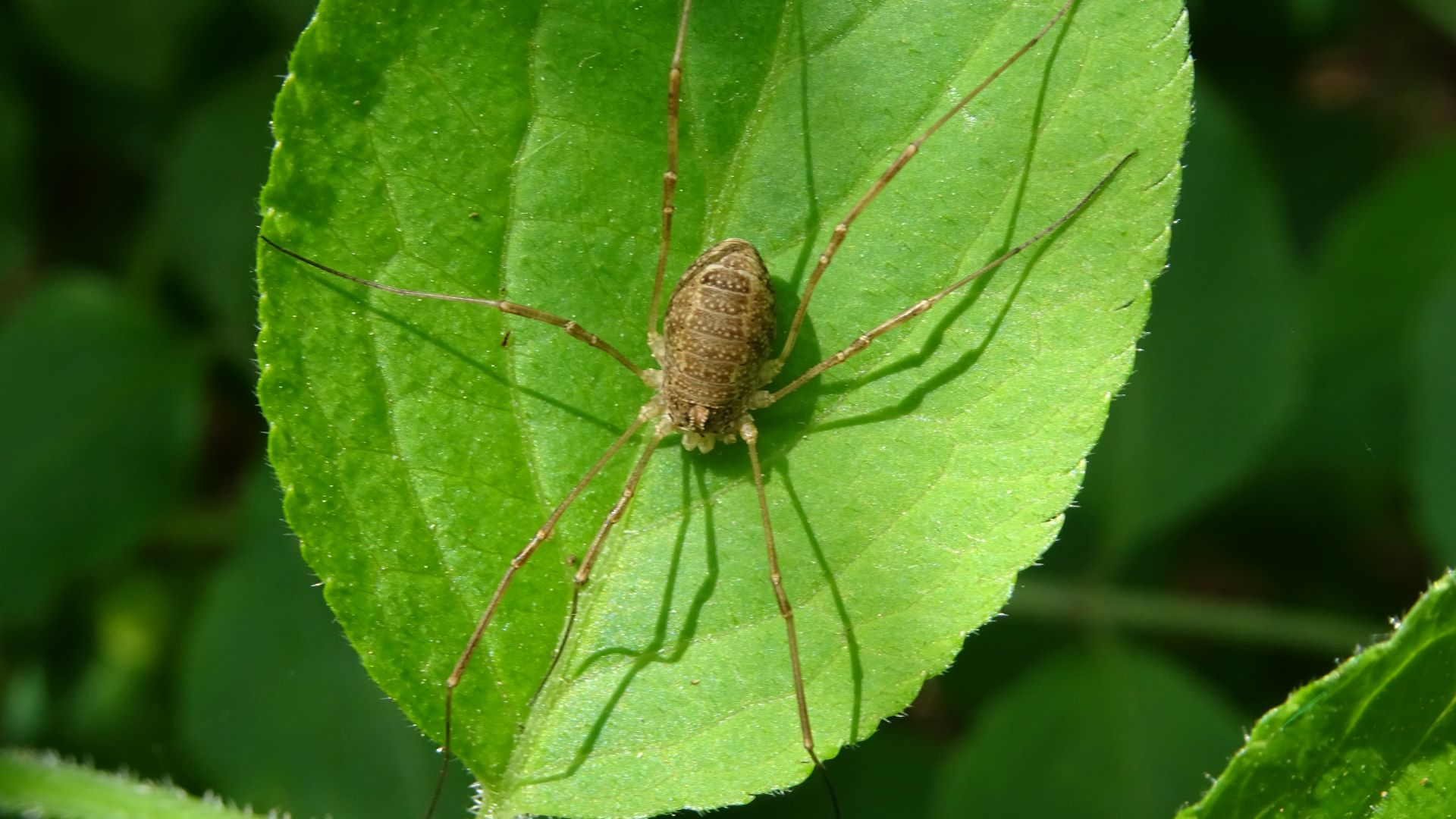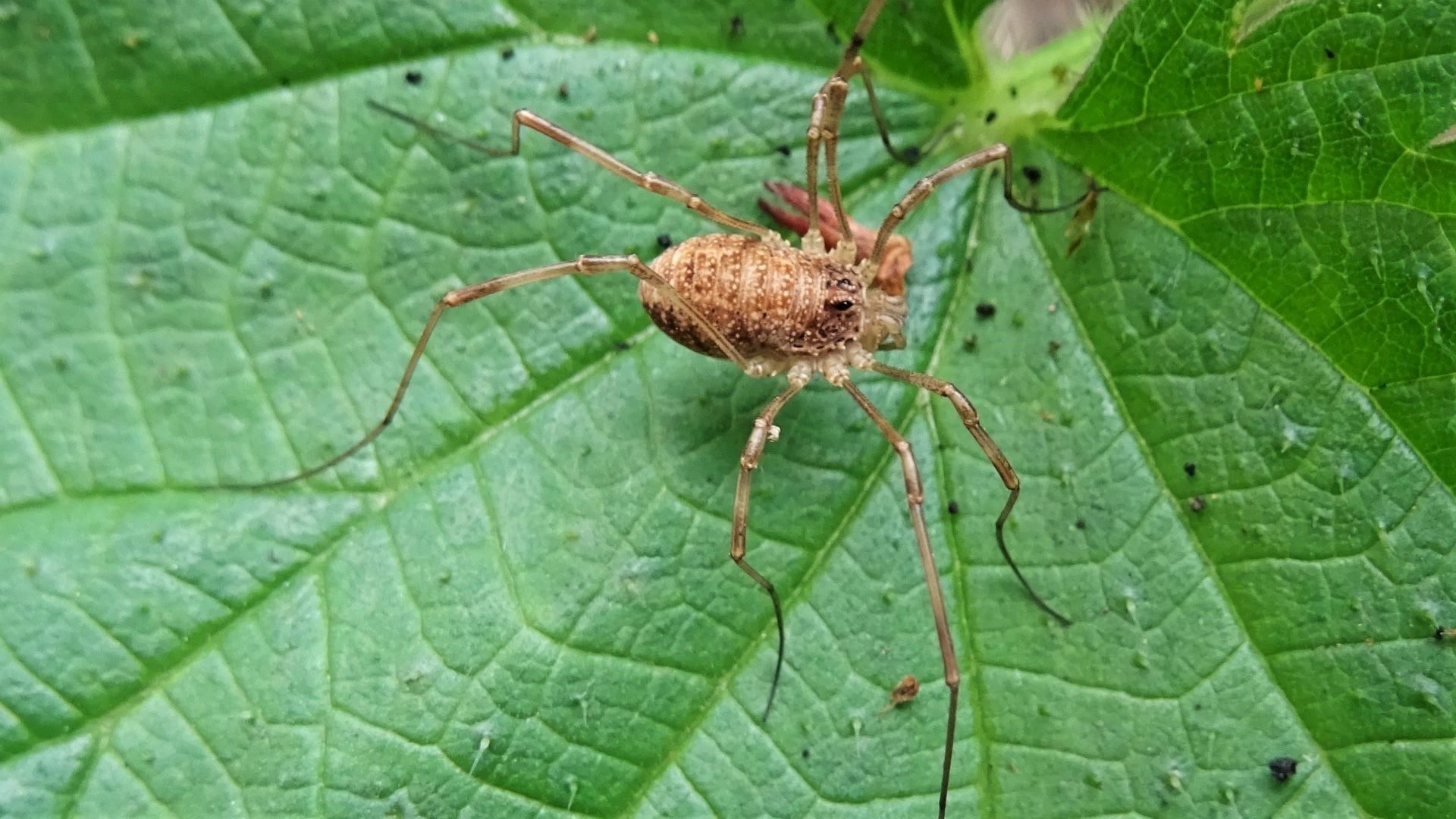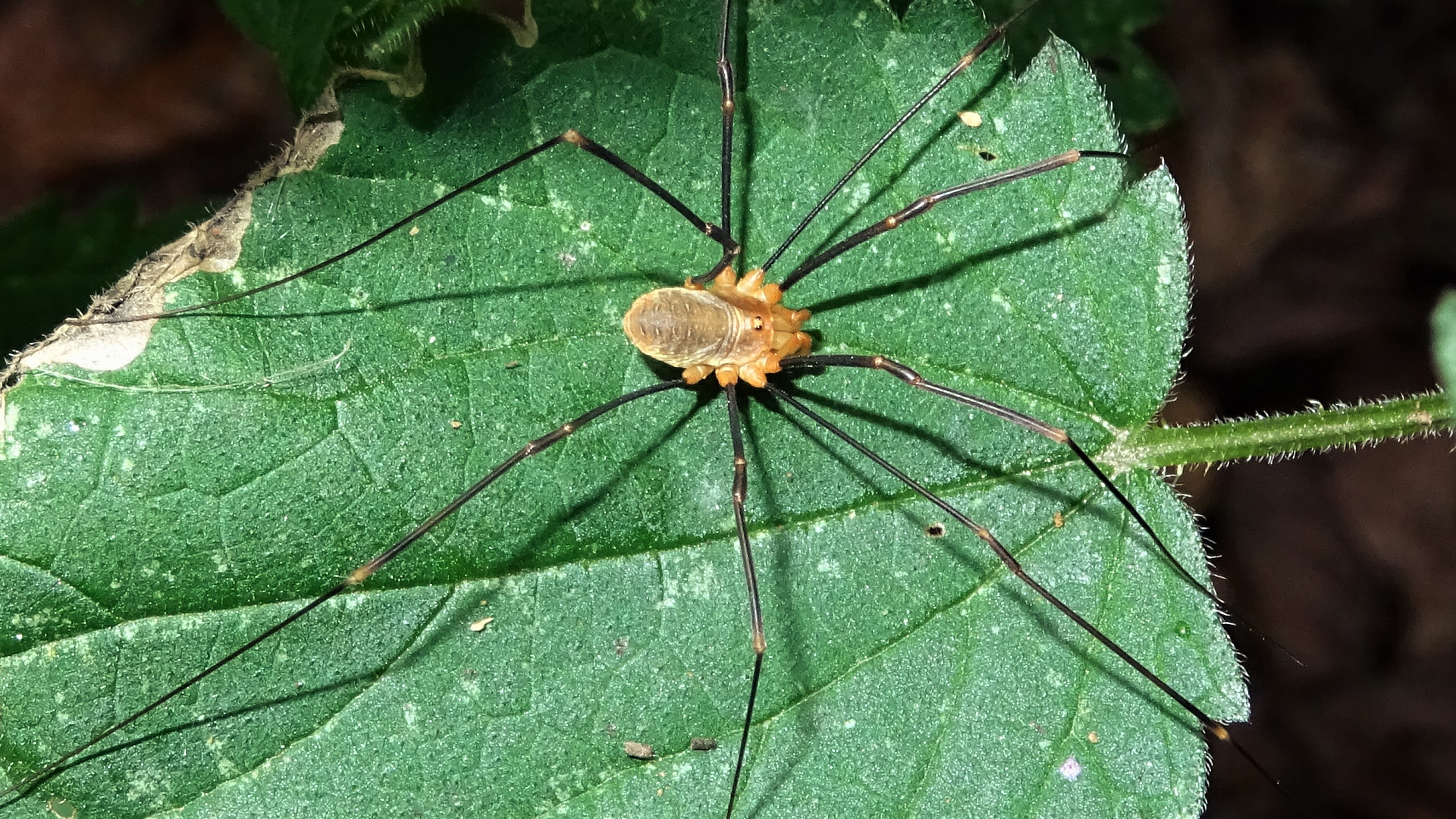Harvestmen are eight-legged arachnids that have single-piece bodies. Unlike spiders they do not spin silk or produce venom, have two eyes, cannot regrow lost legs and tend to be omnivorous, whereas most spiders are carnivorous.
Spring Harvestman Rilaena triangularis
Normally this is the only adult harvestman species to be found early in the year and for that reason is sometimes referred to as the 'Spring Harvestman'. It is found low on hedgerows in woodland. Harvestmen are long-legged invertebrates related to spiders and scorpions. Many are predators feeding on small invertebrates that they catch using hooks at the ends of their legs. Others are omnivorous scavengers that feed on a range of foods including fruit and fungi. They have no silk glands so do not make webs.


#
Saddleback Harvestman Mitopus morio
Mostly found on low greenery in summer and autumn. Females are normally larger than males. Males have bodies measuring 4-6mm long, whereas females can be up to nearly 9mm in length. The body carries a dark brown saddle pattern which is blacker on males.


#
Leiobunum Harvestman
Leiobunum rotundum
Nocturnal species with a preference for damp locations. Females have a dark saddle on the back that is mainly parallel with the sides. There are black rings around the eyes. At the time of writing this species does not have a common name.

#
Fork-palped Harvestman Dicranopalpus ramosus agg.
Dicranopalpus ramosus needs to be examined under a microscope to tell it apart from D. caudatus, unless done it should to be recorded as Dicranopalpus ramosus agg. This species with brownish body and dark markings is now found across Europe mainly on walls and fences from August until November. It originates from Morocco. Females have lighter colouration. Males have bodies up to 4mm long, whereas females can be up to 6mm. Both sexes have very long legs which can be up to 50mm in length. The resting posture with legs stretched out at the sides and forked pedipalps are useful characteristics for identification purposes.


#
Canestrini's Harvestman Opilio canestrinii
Fairly new to Britain, first reported beside a Lea Valley reservoir during October 1999. Since then it has rapidly spread across the country. The orangish body colour is paler in females. Both sexes have very long dark legs. Usually seen from June until December.



#
© hainaultforest.net. All rights reserved.

